What’s Up?
I’ve been playing a lot recently with the 200-600 and the a9. I have been getting some great stuff on vultures in flight and some nice crane behavior. In the evenings, I tried been adding the 1.4X TC and did well with silhouettes. Last Wednesday, with a nice sunset shaping up, I decided to add the 2X and handhold. My expectations were low. As you can see by looking at today’s four featured images, I was blown away, in part by the sharpness. And by the images.
My original plan was to continue my coverage of the SONY gear in chronological fashion but I was so thrilled with the handheld success at 1200mm that I could not wait to share these.
Need System or Upgrade Advice?
These are certainly exciting and volatile times in bird and nature photography: Canon, Nikon, SONY? Upgrade or switch systems? Yikes! If you are thinking about switching or upgrading and have questions, feel free to call me on my cell at 863-221-2372 for a free ten-minute consultation. The only thing that I ask in return is that you make a firm commitment to use my B&H affiliate links or to buy from Bedford using the BIRDSASART discount code at checkout if you decide to go forward. Remember that Steve Elkins at Bedford can save you a few additional bucks on lens/camera/accessories packages. See the blog for his contact details. Either way, it will not cost you one penny more.
Be sure to leave a message if I do not pick up and I will get back to you. And please follow that up with an e-mail or a text stating your name and a good time for me to call you back. I spend lots of time each day walking, swimming, and watching football and baseball 🙂 And napping.
BIRDS AS ART
BIRDS AS ART is registered in the U.S. Patent and Trademark Office.
Money Saving Reminder
If you need a hot photo item that is out of stock at B&H, would enjoy free overnight shipping and would like a $50 discount on your first purchase over $1000.00, click here to order and enter the coupon code BIRDSASART at checkout. If you are looking to strike a deal on Canon or Nikon gear (including the big telephotos) or on a multiple item order, contact Steve Elkins via e-mail or on his cell at (479) 381-2592 (Eastern time) and be sure to mention your BIRDSASART coupon code and use it for your online order. Steve has been great at getting folks the hot items that are out of stock at B&H. Those include the SONY a7r IV, the SONY 200-600, the SONY 600mm f/4 GM, and the Nikon 500mm PF. Steve is eager to please.


Gear Questions and Advice
Too many folks attending BAA IPTs and dozens of photographers whom I see in the field and on BPN, are–out of ignorance–using the wrong gear especially when it comes to tripods and more especially, tripod heads… Please know that I am always glad to answer your gear questions via e-mail. Those questions might deal with systems, camera bodies, accessories, and/or lens choices and decisions.
|
|
|
This image was created on October 23, 2019 down by the lake near my home at Indian Lake Esates. I used the handheld Sony FE 200-600mm f/5.6-6.3 G OSS lens with the Sony FE 2.0x teleconverter (at 1200mm) and the AF King, the Sony Alpha a9 Mirrorless Digital camera body. ISO 50. Exposure determined by Zebras with ISO on the rear dial: 1/4000 sec. at f/13 in Manual mode. AWB at 6:36am about 15 minutes before sunset. Left Zone Continuous/tracking AF was active at the moment of exposure. Image #1: Anhinga stretching at sunset |
Disk-of-the-Setting-Sun Photography
I have talked about disk-of-the-setting-sun photography here before. As always, you are cautioned to attempt these images only when the sun is well-muted by light clouds or fog. If you look away and the world looks purple, you must desist or risk damaging your eye. Obviously to pull off this type of image your choice of perspective is of paramount importance. Working from your vehicle is difficult as you have little control over the height of the rig if you are photographing from your car’s window. If you are on a tripod, you will be moving to your left and adjusting the height of the tripod every few moments as the sun moves westward and down. For all of those reasons, being able to handhold at 1200mm is a huge plus; it enabled me to come up with the right perspective fairly easily. If I had not torn a rotator cuff muscle in my left shoulder 18 months ago it would have been that much easier …
The Perch
The perch here (and seen previously on the blog) is one that I erected with the help of my friend Anita North. Its location is detailed in the BAA Middle of Florida Photographic Site Guide. Scroll down for details on this great guide.
|
|
|
This image was also created on October 23, 2019 down by the lake near my home at Indian Lake Esates. Again, I used the handheld Sony FE 200-600mm f/5.6-6.3 G OSS lens with the Sony FE 2.0x teleconverter (at 1200mm) and the AF King, the Sony Alpha a9 Mirrorless Digital camera body. ISO 125. Exposure determined by Zebras with ISO on the rear dial: 1/4000 sec. at f/16 in Manual mode. AWB at 6:41pm. Left Zone Continuous/tracking AF was active at the moment of exposure. Image #2: Anhinga posing at sunset |
Getting the Right Exposure
I aimed for a very few Zebras on the center of the sun. That translated to a bit of overexposure that was dealt with fairly easily during the RAW conversions in Capture One. Notice that for the most part I simply raised the ISO as the sun set and the light levels went down.
The Color Optimizations
With Image #1, I was able to come up with the RED and YELLOW tones using the Color Editor in Capture One. With the other three images, I needed to bring the converted TIFF into Photoshop and do some additional work as follows: Filter > Camera Raw Filter > HSL tab. To my eye, the colors look fairly consistent.
|
|
|
This image was also created on October 23, 2019 down by the lake near my home at Indian Lake Esates. Again, I used the handheld Sony FE 200-600mm f/5.6-6.3 G OSS lens with the Sony FE 2.0x teleconverter (at 1200mm) and the AF King, the Sony Alpha a9 Mirrorless Digital camera body. ISO 250. Exposure determined by Zebras with ISO on the rear dial: 1/3200 sec. at f/16 in Manual mode. AWB at 6:42pm. Upper Left Zone Continuous/tracking AF was active at the moment of exposure. Image #3: Anhinga looking down at sunset |
The Two Strongest Images?
Though I like all four images, I feel that two of the four are well stronger than two others. Please leave a comment letting us know which two images you feel are the strongest of the lot. And let us know why. I will chime in a few days.
|
|
|
This image was also created on October 23, 2019 down by the lake near my home at Indian Lake Esates. Again, I used the handheld Sony FE 200-600mm f/5.6-6.3 G OSS lens with the Sony FE 2.0x teleconverter (at 1200mm) and the AF King, the Sony Alpha a9 Mirrorless Digital camera body. ISO 400. Exposure determined by Zebras with ISO on the rear dial: 1/2500 sec. at f/16 in Manual mode. AWB at 6:44pm. Upper Left Zone Continuous/tracking AF was active at the moment of exposure. Image #4: Anhinga looking elegant at sunset |
How Better?
In what way would Image #4 have been improved if I had moved the lens one or two inches to my left?
|
|
The BAA Middle of Florida Photographic Site GuideYou can purchase your copy here in the BAA Online Store. |
The BAA Middle of Florida Photographic Site Guide
126 pages, 87 photographs by Joe Przybyla and Arthur Morris.
The PDF for this e-Guide is an electronic download sent via e-mail.
Purchase your copy here in the BAA Online Store.
I had thought about doing a guide to some of the great but little-known photo hotspots around central Florida for about a decade, but those plans never came to fruition. I met Joe online in the Avian Forum at BirdPhotographer’s.Net about two years ago. Joe’s photography has improved tremendously over the past few years; he credits the BAA blog, my books and PDFs, and his participation on BPN. The one thing that I learned right from the get-go about Joe is that he is a hard and tenacious worker, always striving to improve his skills and to grow his knowledge base. As he knew of more than a few good spots in central Florida, I broached the idea of us doing a photographic site guide that covered many of the little-known photographic hotspots from Brandon to Lakeland to Joe Overstreet Road to Indian Lake Estates (my Florida home for the past 20 years or so). After more than many, many dozens of hours of effort, The BIRDS AS ART Middle of Florida Photographic Site Guide is now a reality. Thanks to Joe’s wife Dottie for her review of our writing. We all learned once again that writing is a process, a back and forth process. All thanks to the white pelicans of Lakeland. Here are the locations that are detailed in this e-Guide:
- Indian Lake Estates: Sandhills Cranes with chicks and colts, lots of vultures, and Ospreys up the kazoo!
- Gatorland, Kissimmee: Learn to make great images of wading birds in a cluttered rookery.
- The Brandon Rookery: Great for nesting Wood Storks, Great Egrets, and more.
- Circle Bar B Reserve, Lakeland: Here you will find a great variety of avian subjects in a great variety of habitats.
- Lake Morton, Lakeland: There are lots of silly tame birds here including and especially American White Pelican during the colder months.
- Lake Mirror, Lakeland: Tame Anhingas, Limpkins, and a zillion White Ibises at times.
- West Lake Parker, Lakeland: Here you will have a chance for two difficult birds, Snail Kite, and Purple Gallinule.
- Joe Overstreet Road, Kenansville: Crested Caracara, meadowlarks, Loggerhead Shrike, and much more on the fenceposts and barbed wire.
Each location includes a map, a detailed description of the best spots, best season, light and time of day instructions, the expected species, and an educational and inspirational gallery that is designed to open your eyes as to the possibilities.
You can purchase a copy here in the BAA Online Store.
|
|
The Capture One Pro-12 Simplified Video
|
The Capture One Pro-12 Simplified Video
$15.00 via electronic download
As below, Capture One did a great job of converting the RAW (NEF) files for today’s featured images.
When I first heard about doing RAW conversions in Capture One Pro 12 I purchased the somewhat pricey program and tried to figure it out on my own. I was totally lost. So I did some reading online and was still very confused. Then I consulted Arash Hazeghi’s comprehensive The Nikon Photographers’ Guide to Phase One Capture One Pro e-Guide and while Arash does a great job of covering the fine points, I still had some difficulty getting started. I thought Who needs Sessions and who wants to have to Import images? So I consulted Patrick Sparkman, the BAA technical advisor. Patrick had been using C-1 Pro 12 for a while. We spent a good deal of time on FaceTime simplifying things. That video is a direct result of those conversations.
You can purchase your copy in the BAA Online Store here.
If you are new to Capture One Pro-12, please click here to order. Understand that C-1 Pro 12 is expensive for good reason … Are your photos worth it?
Here are some of the things you will learn in this 33+ minute video as we convert nine different RAW files (eight Nikon and one SONY) from soup to nuts, from Photo Mechanic through the RAW conversion in Capture One to Photoshop:
- 1-How to quickly and easily find your images while working in a simple file folder format.
- 2-How to customize your Exposure and Details tabs to streamline your workflow.
- 3-How to set the White and Black points using Levels.
- 4-How to adjust set the values for the relevant sliders including Exposure, White Balance, High Dynamic Range (the Highlight and Shadow sliders), and Clarity and Structure.
- 5-How to work at 100 or 200% and fine-tune your settings for Noise Reduction and Sharpness.
- 6-How to work with the Color Editor
If you are trying to get a handle on how to use this great RAW conversion engine for your Nikon and SONY images, this video is just what you have been looking for. It is meant to serve as an adjunct to Arash’s comprehensive The Nikon Photographers’ Guide to Phase One Capture One Pro e-Guide. For Canon shooters, Arash and I both recommend using DPP 4.
If In Doubt …
If you are in doubt about using the BAA B&H affiliate link correctly, you can always start your search by clicking here. Please note that the tracking is invisible. Web orders only. Please, however, remember to shoot me your receipt via e-mail.


Please Remember to use my Affiliate Links and to Visit the BAA Online Store 🙂
To show your appreciation for my continuing efforts here, we ask, as always, that you get in the habit of using my B&H affiliate links on the right side of the blog or Bedfords, for all of your photo and electronics purchases. Please check the availability of all photographic accessories in the New BIRDS AS ART Online Store, especially the Mongoose M3.6 tripod head, Wimberley lens plates, Delkin flash cards and accessories, and LensCoat stuff.
As always, we sell only what I have used, have tested, and can depend on. We will not sell you junk. We know what you need to make creating great images easy and fun. And please remember that I am always glad to answer your gear questions via e-mail.
I would, of course, appreciate your using our B&H affiliate links or Bedfords for all of your major gear, video, and electronic purchases. For the photographic stuff mentioned in the paragraph above, and for everything else in the new store, we, meaning BAA, would of course greatly appreciate your business. Here is a huge thank you to the many who have been using our links on a regular basis and those who will be visiting the New BIRDS AS ART Online Store as well.
Be sure to like and follow BAA on Facebook by clicking on the logo link upper right.
Typos
In all blog posts and Bulletins, feel free to e-mail or to leave a comment regarding any typos or errors. Just be right :).


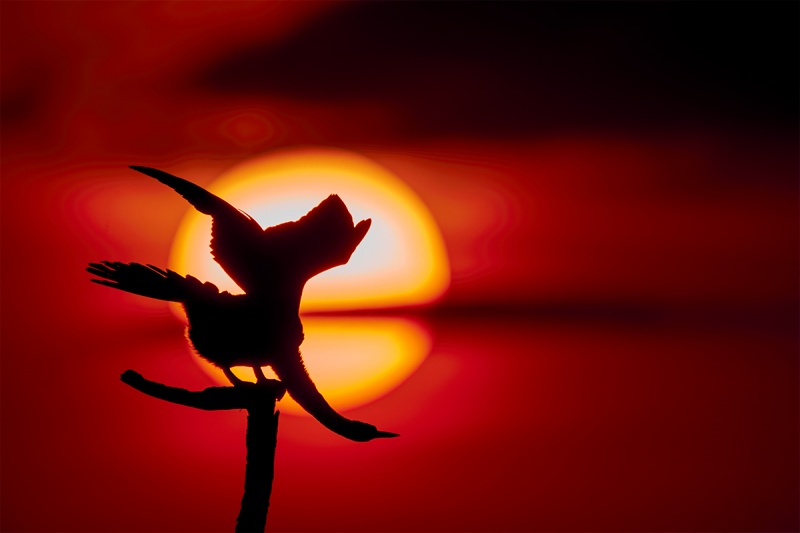
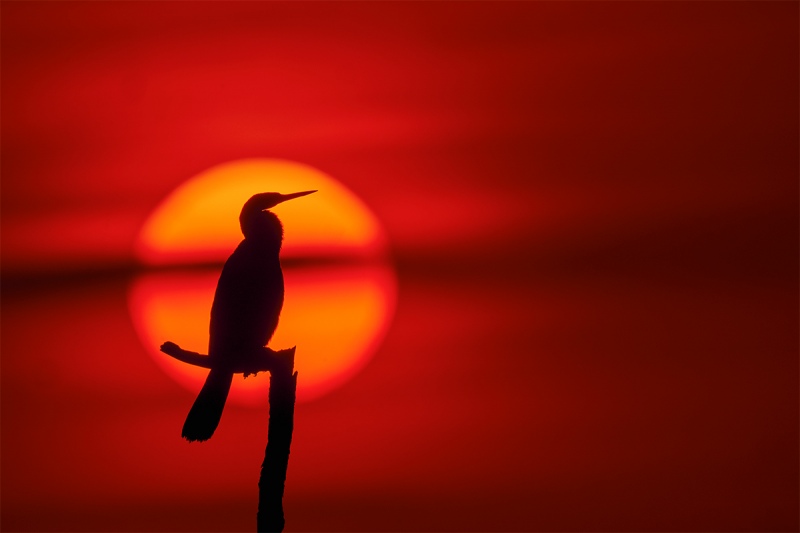
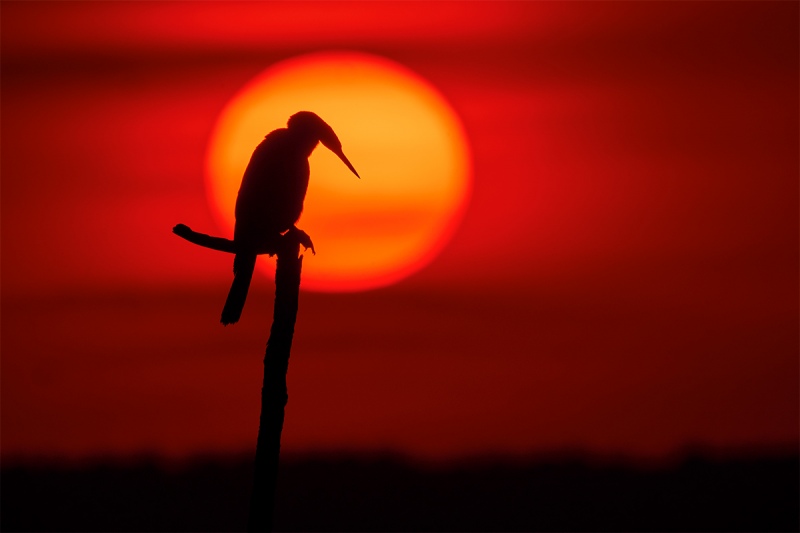
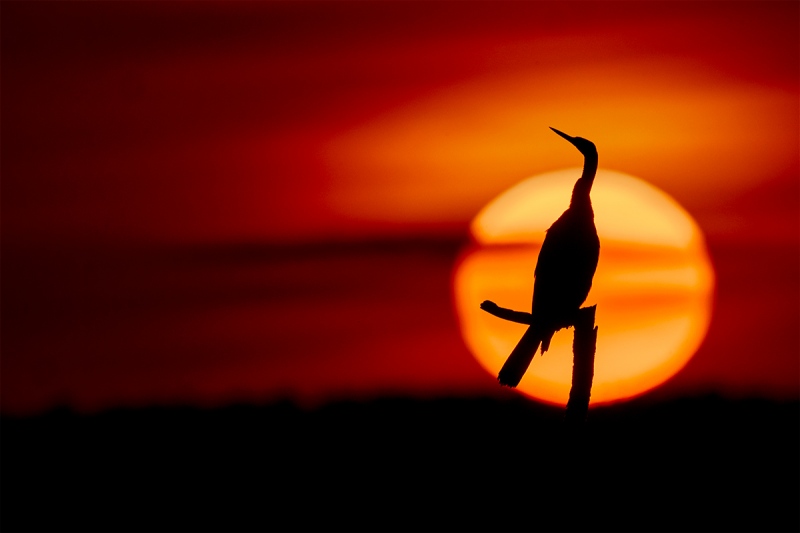
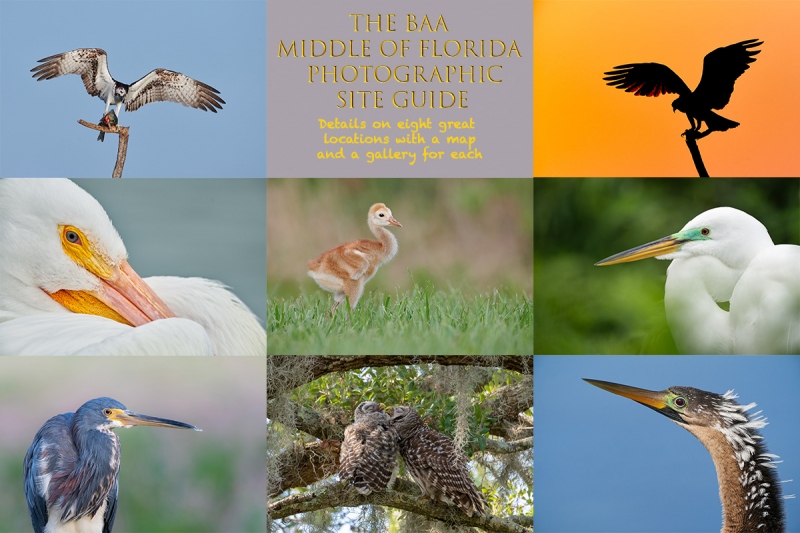
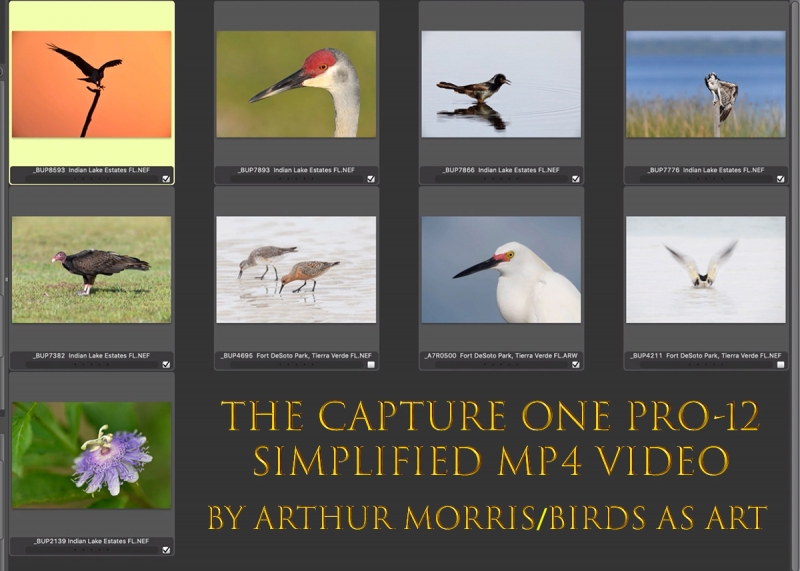













I would also say images 1 and 4 are the strongest. Image 1 has such a unique behavior captured and make you just want to look at the image. Image 4 also has a good and interesting pose.
I agree moving just a little to the left would have kept the entire tail withing the sun disk.
Where should I look for my download of the new Central Florida book? I paid via PayPal on Saturday.
Thanks,
Jim sent it twice. We are closed on weekends 🙂
Thanks for your purchase.
with love, artie
I’d go with images 2 and 3, though I also like the first image. The last image, placing the bird towards the right makes sense giving the direction of the head, but something seems off about it. I don’t know if it’s the darker shading on the left hand side of the image or something else. It could also be that there is less open space (negative space) between the sun and the border on that image than the others. Image two seems like the classic portrait shot of this bird. Like how the clouds bisect the sun.
Art, I’m new to Sony and so far I’m loving the Sonys’. I have the a9 and the a7rIII and the 200-600. I’m torn whether to have the 200-600 on the a9 or the a7rIII. The higher resolution seems to sway me to the a7rIII but the flawless focusing makes me think the a9 makes more sense. What would be your suggestion?
I’d go with the a9 for flight and the 7r III for everything else … Search the blog in the little white box upper right for a7r III and you’ll find lots of Galapagos images …
wtih love, a
Thank you kindly Art.
Wonderful images Gurujee.
Regards.
Thanks, QAH.
with love, a
Yes, the 200-600 is proving to be a versatile lens. Today, I was out at a nearby refuge and in spite of the darkly overcast skies necessitating higher ISO’s (1250+ for a Tv of 1/500 or better) the 200-600 was proving itself. Just for fun I had a belted kingfisher fly across about 50-75 yards away and the a7ivr and 200-600 combo in zone mode captured 9/10 photos in perfect focus, something my Canon gear would never be able to acquire, let alone focus upon in iffy light with a busy background.
Image #1 and image #4 are the strongest of the 4.
2 and 3 for me are the best ones.
Hey Artie love the series. Image 3 works best for me as the bird is composed best in the frame of the sun. Good action in image 1. Was there room to back up and put all of the bird in the sun?
Thanks, Robert. There was lots of room, but by backing up the bird would have been a lot smaller in the frame. As long as the sun is muted enough so that the sky around it is red not black, I am fine with having the head and/or the tail out of the frame.
with love, a
Artie: images 2 and 4 for me with 4 getting the prize. How much does the rig weigh?
Thanks, David. With the hood and the flimsy strap, the 200-600 without the foot with the 2X and the 19 with a battery in it weighs 7 pounds, 0.4 ounces.
with love, artie
Hey Artie, still using the perch that you and Anita installed. It works well for sunsetting silhouettes. I like the third image the best, clearer sun, less distractions. I took note of the high shutter speeds. Thank you for sharing.
It’s not bad in the morning either. I need to erect some more … YAW.
Yes, most folks overlooked the very high shutter speeds (with fairly low ISOs), those the result of lots of light from pointing the lens directly at the sun.
with love, a
Artie, stunning images! My favourites are image #1 (for the fantastic pose) and image #4 (for the dark horizon and the pose of the bird looking back over it’s shoulder). Image #4 would be improved had the lens been moved 2 inches to the left becuase the tail of the bird wouldn’t intersect with the boundary of the sun.
Thanks as always,
Jake
Some folks are too smart …
with love, a
Hi Artie,
very nice images. Amazing results for 1200mm. I appreciate your detailed comments about handholding.
I like images 1 and 3 best, #1 because of the interesting bird position, although the hot spot is a negative compared to the other images. I find #3 overall very pleasing with the bird looking down.
Thaks, Dietmar. The hotspot is bright but not over-exposed.
with love, artie
Image 3 stands out for me as it has no distracting ‘lines’ across the face of the sun. Image 4 I think, is the best of the rest. The sharpness of all is amazing, you must be delighted with them…..